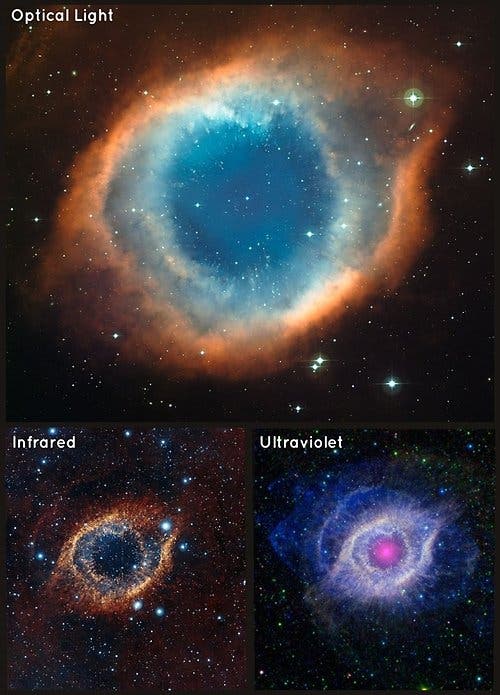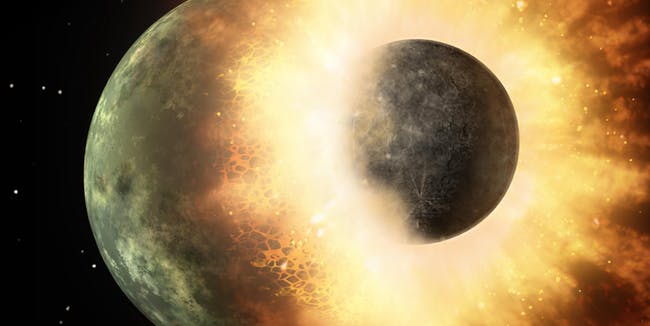Arguably, NGC 7293 is maybe the most stunning deep space photograph astronomers have captured thus far. The nebula, located approximately 700 light-years from Earth in the constellation of Aquarius, goes by the name of the Helix Nebula, but it’s also sometimes referred to as the Eye of God. It’s easy to understand why.

A lot of planetary nebulae – remnants of dead medium-sized stars – resemble an eye because following the death of star, what remains is a dense core called a white-dwarf (the iris), surrounded by the clouds of dust which help to form the visual pattern which we resemble to an eye. The Eye of God nebula, however, bears a truly striking resemblance, especially in the ultraviolet view where what looks like an eyelid and even eyelashes can be seen.
Overall, the nebula extends about 2.5 light-years across. Meaning, it’s larger in size than our entire solar system. In fact, light could make it half of the way from the sun to the sun’s nearest neighbor (in the Alpha Centauri star system) before it could travel from one side of the Helix nebula to the other one.






